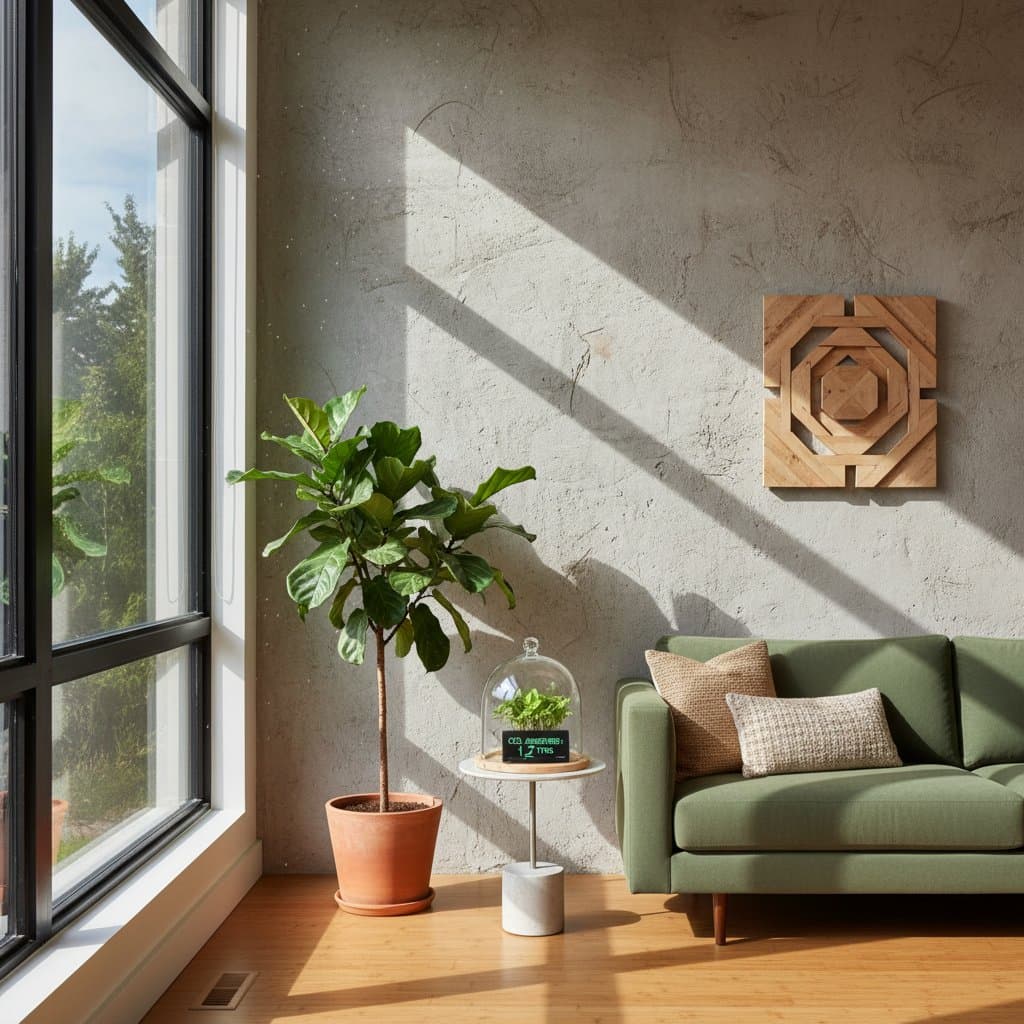Mycelium Insulation: The 2025 Breakthrough in Sustainable Home Design
Visualize mushrooms not in a woodland setting or agricultural field, but integrated into residential walls. The fungal network known as mycelium, which naturally decomposes organic materials, now serves as a cutting-edge insulation solution in eco-conscious construction. This innovation influences perspectives among builders, architects, and property owners on achieving optimal thermal efficiency, minimizing waste, and advancing environmentally sound architecture.
Essential Attributes
- Mycelium insulation, derived from fungal roots, proves fully biodegradable and free of toxins.
- It lowers heating and cooling expenses by as much as 25 percent relative to standard fiberglass variants.
- Manufacturing demands approximately one-tenth the energy input of conventional methods.
- Panels resist fire, pests, and mold inherently, without relying on chemical treatments.
- At the conclusion of use, the material composts easily or integrates safely into natural ecosystems.
Understanding Mycelium Insulation
Mycelium insulation originates from the thread-like fungal roots that extend underground or through decomposing timber. Builders mix this mycelium with byproducts such as corn husks or wood shavings to form a compact, featherweight matrix. The blend fills custom molds and develops in regulated environments until it solidifies. Drying halts growth, yielding a robust, organic panel ideal for insulating purposes.
This product replicates the thermal advantages of foam alternatives while eliminating associated health risks and ecological burdens. Natural cultivation and basic processing keep energy consumption low and avoid hazardous waste generation.
Performance Comparison with Traditional Insulators
Evaluating mycelium insulation reveals its strengths against everyday options.
| Property | Mycelium Insulation | Fiberglass | Spray Foam |
|---|---|---|---|
| Thermal Resistance (R-value per inch) | 3.5 to 4.0 | 2.9 to 3.8 | 5.5 to 6.5 |
| Toxicity | Non-toxic | Can release irritants | Contains chemical off-gassing |
| Fire Resistance | Excellent without additives | Moderate | Requires flame retardants |
| End-of-Life Disposal | Fully biodegradable | Landfill waste | Non-recyclable |
| Production Energy Use | Very low | High | Very high |
Data from green building research indicates mycelium matches typical insulators in effectiveness yet incurs substantially reduced environmental demands.
Environmental Advantages
Mycelium insulation stands out for its capacity to achieve carbon negativity. Growth from organic residues sequesters carbon that might otherwise release as greenhouse gases during decay. Installed in structural elements like walls or ceilings, it sequesters this carbon over long periods.
Conventional insulators depend on petroleum derivatives and energy-intensive production, amplifying emissions. Mycelium, produced regionally from farm waste, cuts transport emissions and overall ecological strain.
A European green building study estimates that replacing fiberglass with mycelium in a standard single-family residence reduces total carbon emissions by up to 60 percent across its lifecycle.
Homeowner Implementation Guide
Prospective users should evaluate installation methods and performance traits when adopting mycelium insulation.
Fitting and Integration
Available as rigid panels or blocks, mycelium insulation slots into conventional framing spaces. Standard cutting tools and installation approaches, similar to those for mineral wool or rigid foam, apply. Its breathable nature manages moisture, preventing condensation and mold issues.
Free from off-gassing or fiber release, the material supports superior indoor air quality. Professionals favor it in green-certified builds, energy-efficient passive homes, and chemical-sensitive renovations.
Pricing and Access
Initial costs exceed those of fiberglass or cellulose by 15 to 20 percent per square foot, reflecting limited production volumes. However, energy reductions recoup this investment in five to seven years, varying by regional climate and building layout. Expanding manufacturing will likely decrease prices in the near term.
Longevity and Upkeep
Installed mycelium insulation maintains integrity effectively. Testing confirms resistance to insects, dampness, and flames without additives. Its inherent density also dampens sound comparably to mineral wool. Degradation occurs only in composting scenarios, ensuring stability within enclosed walls.
Scientific Foundations of Mycelium Efficiency
The material's efficacy stems from its fibrous lattice, which forms tiny air voids to retain heat and permit controlled moisture passage. This equilibrium fosters ideal indoor humidity levels.
Fungal material experts note that mycelium blends exceed synthetic foams in weight-to-strength ratios for compression. Such properties enable use in load-bearing components of modular or factory-built structures.
Dr. Petra Alvarez, a bio-materials specialist, observes that mycelium composites offer exceptional renewability, durability, and recyclability unmatched by most manufactured options.
Proven Projects and Examples
Design teams in Europe and North America integrate mycelium insulation in experimental builds. A collaborative effort constructed compact eco-residences with site-grown panels, achieving 22 percent less heating demand than fiberglass-insulated counterparts.
Developers test combined approaches, pairing mycelium with recycled timber exteriors and lime-based renders for vapor-permeable, chemical-free assemblies. These initiatives demonstrate mycelium's readiness for widespread adoption beyond specialty applications.
Emerging Developments in Fungal Materials
Mycelium insulation heralds wider advances in biologically engineered building products. Innovations include load-bearing fungal blocks, noise-absorbing panels, and mycelium-derived upholstery alternatives. The material's quick growth, low resource needs, and soil-returning decomposition drive its popularity.
Updating regulations to reward low-emission choices positions mycelium for broader approval. Public and nonprofit initiatives fund trials to verify large-scale viability and compliance.
Steps to Adopt Mycelium Insulation
For renovations or new constructions aiming at lower ecological footprints, mycelium insulation provides a feasible strategy. Engage contractors versed in green materials or designers focused on energy optimization.
To optimize outcomes:
-
Pair with solar panels or ground-source heating for comprehensive efficiency.
-
Select permeable interior surfaces to sustain humidity equilibrium.
-
Assess full-cycle economics, where enduring energy and wellness gains surpass entry costs.
Selecting mycelium insulation advances beyond aesthetics. It cultivates residences that harmonize with natural processes, enhancing sustainability.








